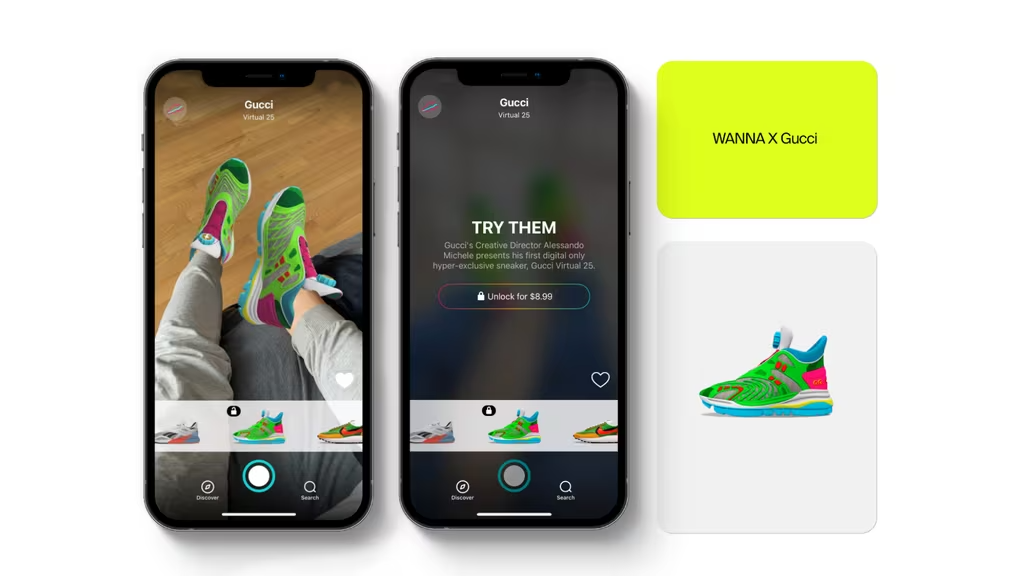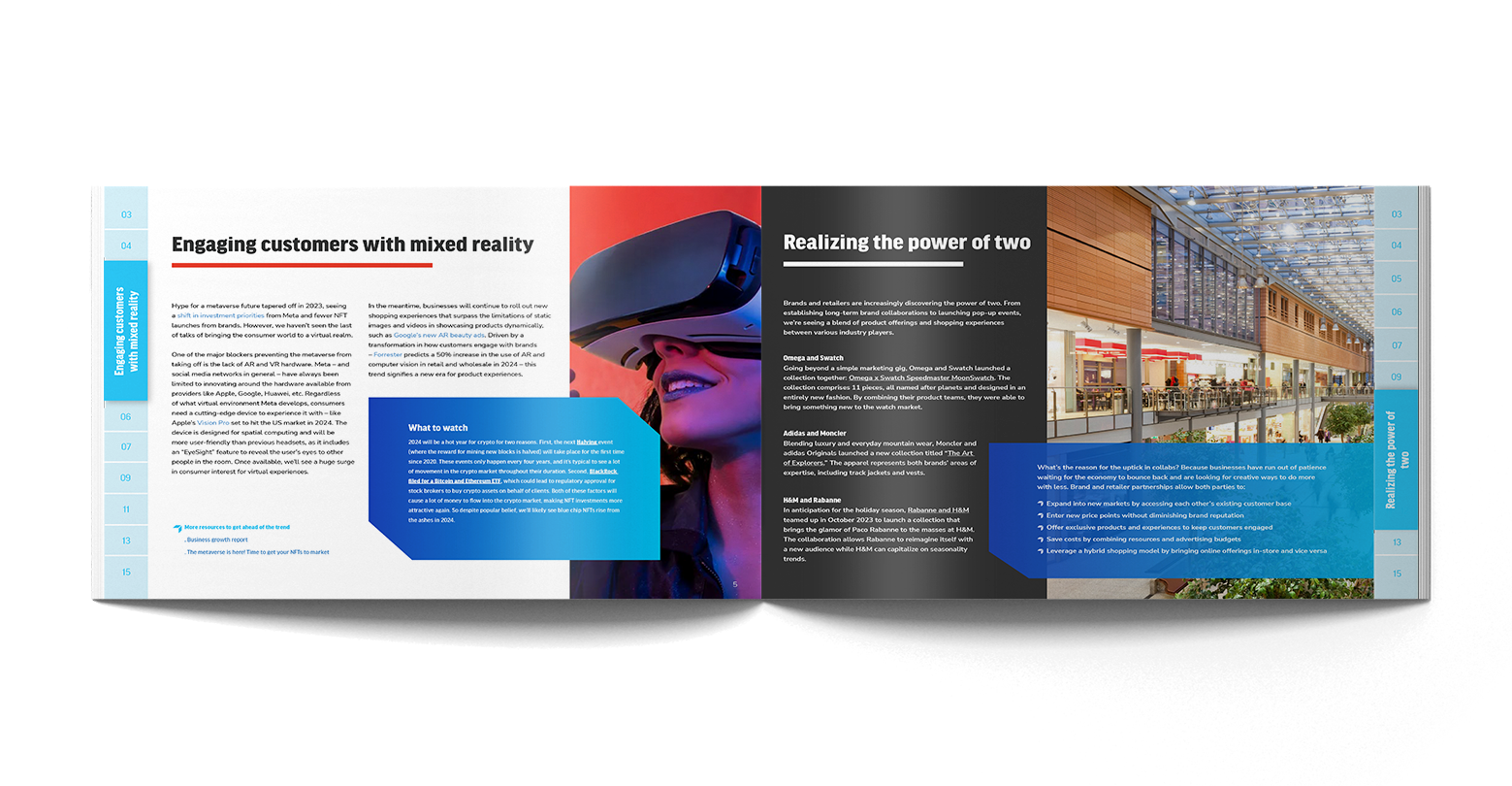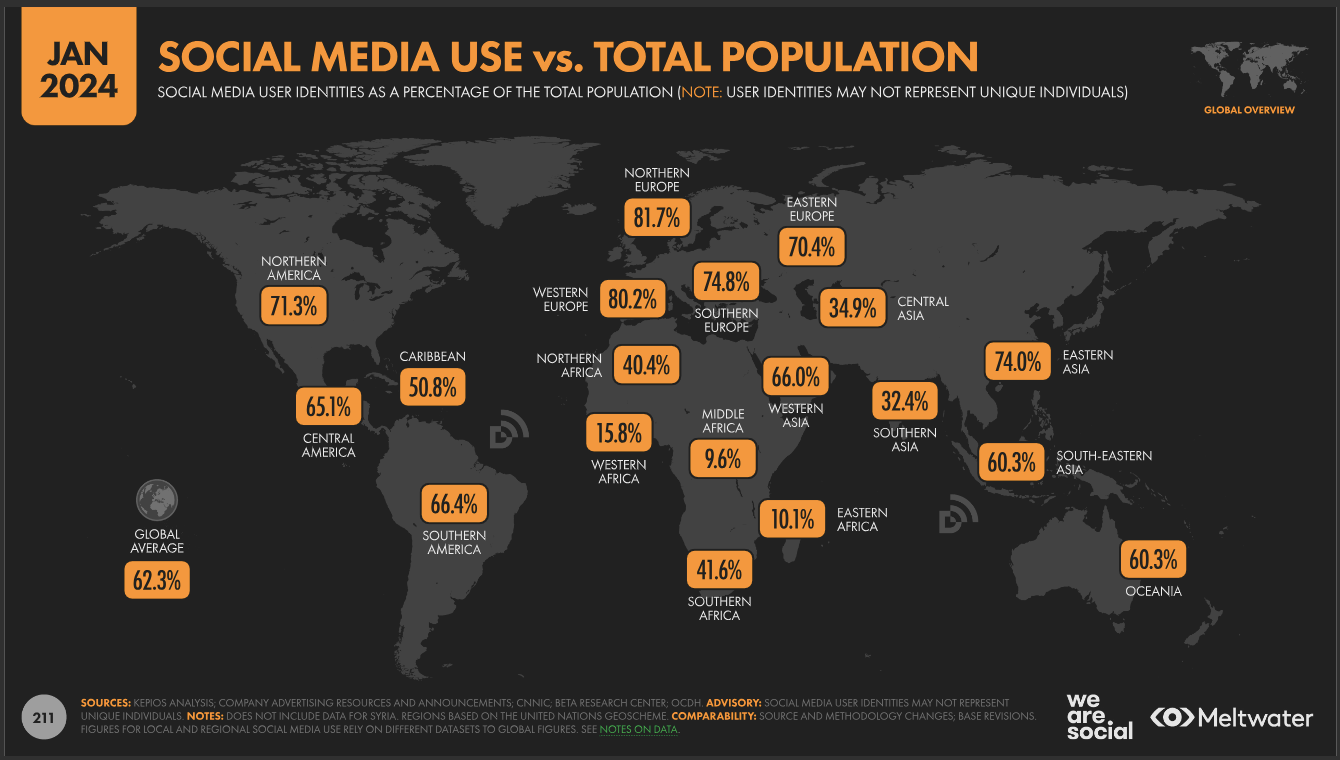Innovation is typically accredited to the tech industry. But when you really begin to examine some of the most impactful technologies and trends, you see that the root of innovation comes back to the everyday consumer. The endless hunger for new, and curiosity for what could be, is the inspiration behind the products and experiences businesses provide. So identifying successful commerce strategies starts with understanding evolving consumer behavior.
Let’s explore the top 7 trends we’re seeing from consumers this year that are shaping the future of commerce.
1. Meta-commerce revolution
The meta-commerce revolution is not just a shift in shopping paradigms; it's a leap into a digital realm where consumers step beyond the constraints of traditional ecommerce. Augmented reality (AR), virtual reality (VR), and spatial computing technologies are redefining the online shopping experience. Brands are creating immersive, 3D virtual storefronts, allowing consumers to explore products in a virtual space before making a purchase.
Leading the charge is the fashion industry, with brands like Gucci and Zara pioneering virtual fitting rooms. Consumers can now try on digital versions of the latest designs in the comfort of their homes.
The metaverse of shopping extends beyond merely buying products; it's about engaging with brands in a virtual space. And consumers expect these brand engagements to be consistent with the other touchpoints they have across physical and online channels. The information they receive about a product or service in the metaverse should match what they’re seeing on TikTok, Amazon, and in-store.
 Source: https://www.businessoffashion.com/articles/technology/gucci-is-selling-12-virtual-sneakers/
Source: https://www.businessoffashion.com/articles/technology/gucci-is-selling-12-virtual-sneakers/
2. Sustainability takes center stage
Consumers are increasingly prioritizing eco-friendly products and ethical practices. The movement towards sustainability is not just a niche preference but a global shift in consumer values. And that’s why there was an increase of 71% in Google searches for sustainable goods over a span of the last 5 years. Brands are responding by integrating sustainable practices into their core values and product offerings.
For example, PrettyLittleThing and Shein, among fast fashion retailers, have introduced their own resale platforms, while Levi’s and Madewell offer discounts in exchange for pre-owned jeans. Vestiare Collective, a secondhand marketplace, has officially prohibited Zara and H&M items, and Urban Outfitters is stepping aside for its rental fashion alternative, Nuuly.
Brands need to make these sustainability initiatives clear to consumers, as it’s some of the top information they’re looking for when selecting products or services. Making sustainability product information accessible has become a crucial commerce tactic in response to more conscious shoppers.
3. AI-driven personalization
Our homes are becoming smarter with the rise of personalized AI assistants. It's not just about asking your device to play your favorite song or provide weather updates; it's about an AI system understanding your preferences, routines, and even predicting your needs.
AI has revolutionized digital content consumption, with platforms such as Netflix and Spotify employing algorithms to suggest personalized content based on viewing and listening history. Furthermore, AI-driven content creation tools automate tasks like video editing and audio mixing, streamlining the creative process for artists and content creators.
Brands like Amazon's Alexa and Google's Assistant have evolved beyond mere voice-controlled assistants. They now integrate with smart home devices, learn from user behaviors, and anticipate actions. According to a survey, 89% of people believe that AI will have an impact on their lives in the next five years.
With all of this hyper-personalized consumption, gone are the days when businesses could get away with a one-size-fits all approach. Brands are retailers are now expected to tailor the shopping experiences they deliver to specific audiences – from the ads popping up in social feeds to the images included in product listings. Similarly to how this demand was created through AI, companies are answering with AI solutions to manipulate product content at-scale.
4. Health and wellness
Who doesn't sport a fitness tracker nowadays? It seems like everyone does. But as we step into 2024, it's time to ask: Are these devices just about counting steps, or do they open doors to a more comprehensive era of digital wellness?
The landscape of health and wellness is undergoing a digital revolution with the expansion of digital health and wellness ecosystems. Wearable tech is not just counting steps; it's monitoring heart rate, sleep patterns, and even mental well-being. Brands like Apple Watch, Fitbit, and Oura have redefined the fitness tracker market, as they go beyond tracking physical activity to provide insights into overall well-being.
In response, brands and retailers need to ensure their product listings and ads reflect a health-conscious lifestyle. Communicating that harmful ingredients weren’t used through labels like “sulfate-free” or “no preservatives” can be the difference between someone picking up your item versus a competitor.
5. Omnichannel success
Consumers shop here, there, and everywhere in between. They browse on Pinterest, add to cart on Walmart, and pick up at the mall. Businesses need to be present, consistently, at each of these touchpoints.
Omnichannel ecommerce has become instrumental in achieving digital shelf success. It goes beyond a mere online presence, emphasizing the seamless integration of various channels, both online and offline, to create a unified brand experience.
This approach will help consumers move fluidly between different touchpoints, such as websites, mobile apps, social media, and physical stores. For example, whether a customer browses the latest iPhone models on the official website, explores features in the Apple Store app, engages with the brand on social media, or visits a physical Apple Store, the experience remains seamlessly connected. The transition from online research to in-store purchase is smooth, and the consistent brand message resonates across all touchpoints.
A brand's ability to provide a consistent and cohesive experience across these channels not only enhances customer satisfaction but also fosters brand loyalty.
6. Social media: The new shopping destination
Social media has evolved beyond a mere communication tool; it's a powerful force shaping purchasing decisions. More than half of the world now uses social media (62.3%) with an average daily usage of 2 hours and 23 minutes.
In 2024, we'll see an active rise in social commerce, where using native checkout on social platforms like TikTok and shoppable posts on Instagram will become the norm. Brands embracing this trend will tap into a seamless buying experience for consumers, driving revenue and loyalty.
7. Life as a game
The gamification market size is projected to grow from $18 billion in 2023 to $46.44 billion by 2027, at a compound annual growth rate (CAGR) of 25.6% during the forecast period. Gamification, once reserved for niche applications, has evolved into an integral part of various facets of our lives.
For example, fitness enthusiasts find motivation through fitness apps that turn workouts into interactive challenges, offering rewards and recognition for milestones achieved. Educational platforms leverage game-like elements to make learning more engaging and dynamic, blurring the lines between education and entertainment.
In 2024, gamification of everyday life will not just be a fun marketing gimmick, but a direct strategy for connecting with consumers and driving sales.
Now explore the top 7 commerce trends
Now that you know the top 7 changes in consumer behavior, discover the top 7 commerce trends in response. Download our 2024 report that analyzes the commerce market to equip you with the insights, leading industry examples, and P2C (product-to-consumer) strategies for global success.
Download here!




 Source:
Source: